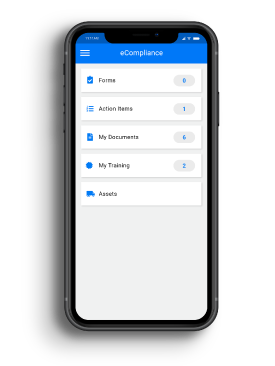
LAST UPDATED
June 29, 2021
WRITTEN BY
eC Author
We believe that technology exists to serve people. This means we spend time thinking about how people interact with the world around them; about the cognitive process. We enjoy a workplace where curiosity & ambition are put in service of making software that makes people smarter.
We’ve been talking a lot recently about the importance of safety reporting and safety programs – specifically, how automation can improve our processes and data collection best practices and how real-time safety visibility can help us enhance safety programs. But it’s time to get a bit more granular and start to examine the types of metrics and safety indicators EHS departments should be tracking, starting with lost time injury frequency rate (LTIFR).
Lost Time Injuries and Lost Time Injury Frequency Rate
When assessing safety performance, one of the most important KPIs to track is lost time injury frequency rate. As any seasoned safety pro can attest, knowing how to calculate and report on LTIFR to your executive team is key. With this number you can assess your safety performance and gauge how strong your safety program is.
But before we discuss how to calculate it, let’s start off with a few helpful definitions:
Lost Time Injury
– any workplace injury sustained by an employee while on the job that prevents them from being able to perform their job for at least one day/shift.
Lost Time Injury Frequency Rate
– the number of lost time injuries that occurred during the reporting period. Most companies choose to calculate LTIFR per 1 million man hours worked.
Calculating Lost Time Injury Frequency Rate
Measuring your LTIFR is actually easier than you think. The formula is as follows:
([Number of lost time injuries in the reporting period] x 1,000,000) / (Total hours worked in the reporting period).
Now, let’s use an example to further illustrate:
After reviewing and compiling your safety data, you’ve determined that there were six lost time, work-related injuries in the past year at your manufacturing company and a total of 2,500,000 hours worked. To calculate your LTIFR, simply plug those numbers into your formula:
(6 x 1,000,000) / 2,500,000
LTIFR = 2.4
And voila! Your company’s LTIFR is 2.4, which means there were 2.4 lost time injuries for every one million man hours worked. Now that you’ve successfully calculated your LTIFR, you can use that data to benchmark performance and see how you stack up against your industry peers.
LTIFR Calculator – Try it yourself!
Related: The Guide to Advanced Safety Analytics and Reporting
Reducing Your LTIFR
EHS departments should be striving for continuous improvement and ultimately – aim to lower LTIFR. Higher frequency rates may result in poor credibility of the organization within your industry, higher insurance premiums, and more turnover as employees don’t feel protected on site.
Below are 3 strategies safety professionals can try, to minimize lost time injuries and improve workplace safety:
Build a Robust Safety Culture
The first thing every EHS leader should do is create a safety culture that promotes worker engagement and participation in safety at every level of the organization. Your culture should focus on employee education and company-wide safety awareness, to truly cultivate a dedication and commitment to safety. Tactics that can help with this include introducing safety committees and hosting toolbox talks.
Conduct Regular Hazard Assessments
Before employees begin work on any job, ensure hazard assessments are being conducted and immediately uploaded into your safety management system. This way risks can be documented and controls can be put in place quickly, to help prevent incidents from happening and protect the workforce.
Invest in Employee Training
Employees should never stop learning while on the job and ongoing training should play a big part in your continuous improvement plan. Regular safety training sessions both in the classroom and through eLearning can help ensure safety is always top of mind for your team. Adequate training can help you avoid accidents in the workplace and vastly reduce injury and incident rates. Making employees aware of unsafe behaviors they may unknowingly be practicing, can make a huge impact on reducing workplace injuries.
Learn More
Having an injured employee or an injured worker on site is something every safety professional wants to avoid, so consider the above techniques to help protect your workers and reduce LTIFR rates.
For more information on how to capitalize on the data revolution, with workplace safety indicators like LTIFR, and build a
safety system with purpose, check out our guide, Ultimate Guide To Preventative Safety Analytics And Reporting.
Learn How You Can Get EcoOnline North America
Complete this form and one of our safety experts will be in touch.

